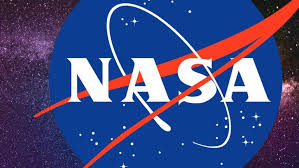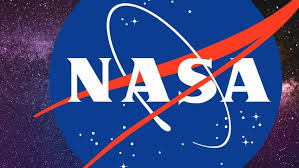
The United States space agency has taken up plans to develop space technologies in its effort to send man again on the surface of the Moon by 2024 in the Artemis mission and later on send man to the Red Planet – Mars, and for this purpose, the agency has selected 13 companies for this purpose which includes Blue Origin of Jeff Bezos and SpaceX of Elon Musk.
The other companies that have been selected by NASA include range from small firms that have less than a dozen employees to large aerospace organizations and the work would be done in partnership with the various centres of NASA. The agency said in a statement on Tuesday that the aim of the partnerships would be to provide expertise, facilities, hardware and software at no cost.
"We've identified technology areas NASA needs for future missions, and these public-private partnerships will accelerate their development so we can implement them faster," said Jim Reuter, associate administrator of NASA's Space Technology Mission Directorate (STMD).
Testing of materials made from metal powders that makes use of solid-state processing to enhance the design of spacecraft that operate in high-temperature environments is to be carried out by Lockheed Martin at NASA's Langley Research Center in Hampton, Virginia.
NASA's Johnson Space Center in Houston and Goddard would work with Blue Origin to further develop a navigation and guidance system which ensures a safe and precise landing at a number of chosen locations on the Moon.
Work on development of fuel cell power system for the company's Blue Moon lander would also be done by Blue Origin in partnership with Glenn and Johnson. Spacecrafts landing on the Moon would get uninterrupted power during the lunar night by the system. A lunar night typically lasts for two weeks in most locations of the satellite.
"Blue Origin, Marshall and Langley will evaluate and mature high-temperature materials for liquid rocket engine nozzles that could be used on lunar landers," said NASA.
The advancement of technology to vertically land large rockets on the Moon would be worked at by SpaceX will in partnership with NASA's Kennedy Space Center in Florida. This project involves creation and use of advancing models to make an assessment of how engine plume interact with lunar regolith. Development of technology needed to transfer propellant in orbit will also be worked on by SpaceX together with Glenn and Marshall. This system is also a critical step in the company being able to further develop its Starship space vehicle.
The US space agency has almost doubled up speed of works and projects to embark on the next giant leap for mankind through its Artemis mission that would take "the first woman and the next man" to set foot on the Moon. That program also includes a NASA program for an unmanned mission around the Moon in 2020 as well as a manned mission which is planned to send man to orbit the Moon after another two years.
According to estimates, the cost of sending a man to the Moon again by 2024 would cost about $30 billion which is approximately the same as the Apollo 11 spaceflight after taking inflation into consideration.
(Source:www.livemint.com)
The other companies that have been selected by NASA include range from small firms that have less than a dozen employees to large aerospace organizations and the work would be done in partnership with the various centres of NASA. The agency said in a statement on Tuesday that the aim of the partnerships would be to provide expertise, facilities, hardware and software at no cost.
"We've identified technology areas NASA needs for future missions, and these public-private partnerships will accelerate their development so we can implement them faster," said Jim Reuter, associate administrator of NASA's Space Technology Mission Directorate (STMD).
Testing of materials made from metal powders that makes use of solid-state processing to enhance the design of spacecraft that operate in high-temperature environments is to be carried out by Lockheed Martin at NASA's Langley Research Center in Hampton, Virginia.
NASA's Johnson Space Center in Houston and Goddard would work with Blue Origin to further develop a navigation and guidance system which ensures a safe and precise landing at a number of chosen locations on the Moon.
Work on development of fuel cell power system for the company's Blue Moon lander would also be done by Blue Origin in partnership with Glenn and Johnson. Spacecrafts landing on the Moon would get uninterrupted power during the lunar night by the system. A lunar night typically lasts for two weeks in most locations of the satellite.
"Blue Origin, Marshall and Langley will evaluate and mature high-temperature materials for liquid rocket engine nozzles that could be used on lunar landers," said NASA.
The advancement of technology to vertically land large rockets on the Moon would be worked at by SpaceX will in partnership with NASA's Kennedy Space Center in Florida. This project involves creation and use of advancing models to make an assessment of how engine plume interact with lunar regolith. Development of technology needed to transfer propellant in orbit will also be worked on by SpaceX together with Glenn and Marshall. This system is also a critical step in the company being able to further develop its Starship space vehicle.
The US space agency has almost doubled up speed of works and projects to embark on the next giant leap for mankind through its Artemis mission that would take "the first woman and the next man" to set foot on the Moon. That program also includes a NASA program for an unmanned mission around the Moon in 2020 as well as a manned mission which is planned to send man to orbit the Moon after another two years.
According to estimates, the cost of sending a man to the Moon again by 2024 would cost about $30 billion which is approximately the same as the Apollo 11 spaceflight after taking inflation into consideration.
(Source:www.livemint.com)





